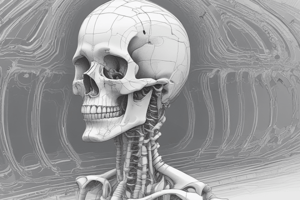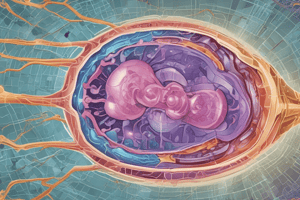Podcast
Questions and Answers
What is the primary factor affecting the noise level in magnification imaging?
What is the primary factor affecting the noise level in magnification imaging?
- The beam intensity (correct)
- The scatter fraction reduction
- The focus-to-image distance
- The image receptor size
What is the Bucky factor in magnification imaging?
What is the Bucky factor in magnification imaging?
- The ratio of focus-to-image distance to scatter fraction
- The ratio of scatter fraction to beam intensity
- The ratio of image receptor size to focus-to-image distance
- The ratio of mAs with scatter reduction method to mAs without scatter reduction method (correct)
Why is a larger image receptor employed in magnification imaging?
Why is a larger image receptor employed in magnification imaging?
- To decrease the mAs required
- To enlarge the focus-to-image distance (correct)
- To increase the signal-to-noise ratio
- To reduce the scatter fraction
What happens to the patient dose when magnification imaging is used?
What happens to the patient dose when magnification imaging is used?
Why may magnification imaging be performed without an anti-scatter grid?
Why may magnification imaging be performed without an anti-scatter grid?
Flashcards
Magnification Imaging Noise
Magnification Imaging Noise
The noise level in magnification imaging is primarily affected by the beam intensity.
Bucky Factor (Magnification)
Bucky Factor (Magnification)
The Bucky factor in magnification imaging is the ratio of milliampere-seconds (mAs) with scatter reduction to mAs without scatter reduction.
Larger Image Receptor (Magnification)
Larger Image Receptor (Magnification)
A larger image receptor is used to increase the focus-to-image distance in magnification imaging.
Patient Dose (Magnification)
Patient Dose (Magnification)
Signup and view all the flashcards
Magnification Imaging & Anti-scatter Grids
Magnification Imaging & Anti-scatter Grids
Signup and view all the flashcards




